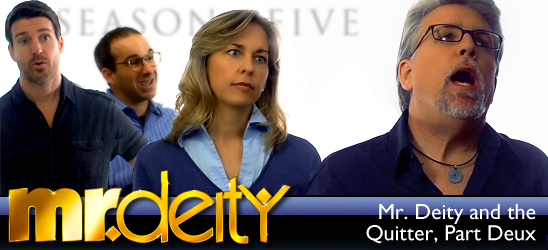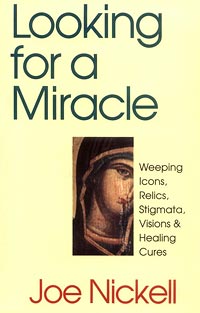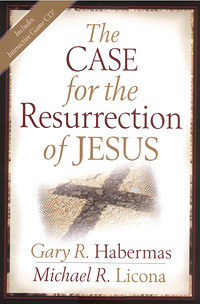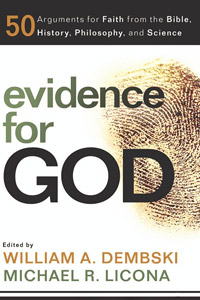In this week’s eSkeptic:
- follow Michael Shermer: Alfred Russel Wallace: Hyper-Evolutionist
- Skepticality: Interview with Daniele Bolelli
- Season 5: Mr. Deity and the Quitter, Part Deux
- Feature article: On Visions and Resurrections
- Our Next Lecture: Dr. Andy Thomson (Why We Believe in Gods)
- Fundraising Drive on Now: Help Send Skepticism 101 into the World!

NEW ON SKEPTICBLOG.ORG
Alfred Russel Wallace was a Hyper-Evolutionist,
not an Intelligent Design Creationist
In this week’s Skepticblog, Michael Shermer endeavors to enlighten modern thinkers on the perils of misjudging Alfred Russel Wallace as an Intelligent Design creationist, and at the same time reveal the fundamental flaw in both his evolutionary theory and that of this latest incarnation of creationism.


Daniele Bolelli
Interview with Daniele Bolelli
SKEPTICALITY EPISODE 175
This week on Skepticality, Derek chats with Daniele Bolelli, the author of 50 Things You’re Not Supposed To Know: Religion. Daniele is an Italian skeptic and writer, a mixed martial arts (MMA) competitor, and a university professor. His book is part a series being produced by the people behind www.disinfo.com (a website, blog, and podcast). Bolelli currently lives in the United States.
Season 5: Mr. Deity and the Quitter, Part Deux
WATCH THIS EPISODE | DONATE | NEWSLETTER | FACEBOOK | MrDeity.com
Can Hallucination Account for the
Post-Crucifixion Appearances of Jesus?
In this week’s eSkeptic, Gary J. Whittenberger applies the hallucination hypothesis to the alleged post-crucifixion appearance of Jesus summarized in three Gospel stories. Based on careful examination of the Gospels and our current knowledge of the human mind, is the hallucination hypothesis far superior to a resurrection hypothesis in accounting for the “facts” of the post-crucifixion story?
On Visions and Resurrections
by Gary J. Whittenberger
In response to advances in higher biblical criticism, science, philosophy, and skepticism, over the past half century many Christian thinkers have retreated from biblical literalism, arguments from authority, and blind faith in scripture. Instead they have begun to rely more on arguments such as “inference to the best explanation” to defend some of their basic beliefs, including and especially the central dogma that Jesus rose from the dead. According to many modern Christian apologists, there are five “facts” surrounding the death of Jesus which must be explained:
- Jesus was crucified by the Romans in Jerusalem in 30–33 CE.
- It was believed at the time that Jesus had died on the cross.
- Jesus was placed in a tomb on a Friday afternoon.
- The tomb was found to be empty by one or more women on the following Sunday morning.
- It was believed that Jesus met with his followers on several occasions after the tomb was found to be empty.
Most modern Christian apologists not only think that the resurrection hypothesis explains these five “facts” better than any other hypothesis, but they believe it is true beyond a reasonable doubt.
The resurrection story became the cornerstone of the Christian faith early when Paul said “And if Christ be not risen, then is our preaching vain, and your faith is also vain” (I Corinthians 15:14). By contrast, secularists think that other hypotheses explain the “facts” much better, that the resurrection hypothesis is extremely improbable, and that, at this stage in our knowledge, no rational person should believe it.
There are many explantations for the origin of the idea of the Christian resurrection, most notably the idea that it developed from the many earlier pagan traditions of dying and rising gods. But I will focus here on a hypothesis that has recently been the target of renewed Christian attack that can account for the “facts” mentioned at the outset. This hypothesis may be simply stated: After Jesus died from crucifixion and was placed in the tomb, his corpse was removed from the tomb by unknown persons who placed it in an unknown location. Furthermore, after the women discovered the tomb to be empty, one or more of the intimate disciples of Jesus had an auditory-visual vision or hallucination of Jesus, which he or they interpreted as the “risen Jesus,” which became the basis of the Gospel stories and the spreading resurrection belief.
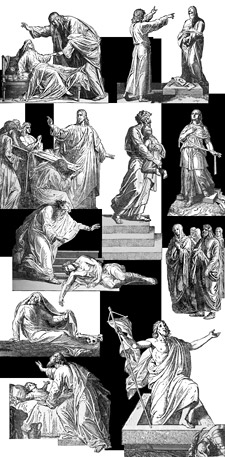
Resurrection in the Bible: (from top left to right) The daughter of Jairus raised by Jesus (Mark 5:39–40); Lazarus, dead for four days raised by Jesus (John 11:1–45); The Widow’s son raised by Jesus (Luke 7:12–17); The son of the Widow of Zarephath raised by Elijah (1 Kings 17:21–24); Dorcus, or Tabitha raised by Peter (Acts 9:36–43); Eutychus, raised by Paul (Acts 20:9–12); A number of people raised around the time of the death and resurrection of Jesus (Matthew 27:51–53); A man whose body touches Elisha’s bones (2 Kings 13:20–21); The Shunammite’s son raised by Elisha (2 Kings 4:32–35); The resurrection of Jesus (Matthew 28:5–7) (Luke 24:1–8) (John 20:1–9).
The purpose of this essay is to demonstrate that the hallucination hypothesis is a plausible explanation of the post-crucifixion “appearances” of Jesus, and to defend it against some of the current criticisms of Christian apologists.
In the Gospels there are eight stories about appearances of Jesus to his followers after his crucifixion. These appear near the ends of three of the Gospels—Matthew, Luke, and John. It is now acknowledged by most New Testament scholars that in the original Gospel of Mark there were no stories of Jesus’ post-crucifixion appearances. In this essay, for the sake of simplicity, I will address only three of the eight appearance stories —the ones in which Jesus appears to a group of most of the disciples, either 10 or 11 of them. These three stories in three different Gospels appear to refer to the same event. The other five stories are not replicated across all three Gospels.
In Matthew 28:16–20, it is said that Jesus met with 11 of his disciples (apparently excluding Judas) on a mountain in Galilee to which he had directed them. Even though some of the disciples had doubts about what was happening (unspecified in the text), Jesus supposedly instructed the disciples to go out into the world to preach and baptize. It is significant that in this account Jesus mentions the three persons who later came to be called the “Trinity.”
According to the second story (much more complex than the first), taken from Luke 24:36–53, Jesus met with an unspecified number of disciples in Jerusalem and nearby Bethany. He supposedly opened by saying “Peace be unto you.” Then, apparently to confirm his identity, Jesus drew attention to his hands and feet and urged the disciples to touch him. The story does not say whether they took him up on the offer. Then, apparently to confirm his corporeality, Jesus asked for food, received it, and ate it. Jesus told them that what had happened to him was a fulfillment of scripture that a special one should suffer, die, and be raised from the dead on the third day. Finally, he urged them to carry his message to the world, starting in Jerusalem, and then he ascended into the sky.
In the third story found in John 20:19–23, Jesus met with 10 of the disciples (apparently excluding Judas and Thomas) in a closed room somewhere near Jerusalem supposedly on the same day that the women had found the empty tomb. In this account Jesus also started by saying “Peace be unto you,” and he said this a second time during the meeting. He drew attention to his hands and side (not his feet). He urged the disciples to go into the world and preach, he assigned them the authority to remit sins, and he breathed on them the “Holy Ghost.” I am assuming that all three of these stories are referring to the same event, whether that event was an actual meeting of the risen Jesus with the disciples, the core of a vision, or the product of fabrication. This assumption is justified because all three of the stories share three elements:
- Jesus meets with a large group of disciples (10 or 11); they see and hear him.
- Jesus instructs the group to go out into the world and preach.
- The meeting occurs post-crucifixion.
Only one such meeting is mentioned in Matthew and Luke, but two similar meetings are mentioned in John, only the first of which is considered here. Any reasonable hallucination hypothesis must provide an adequate account of this basic narrative in which Jesus meets with the large group of disciples. A careful analysis shows that there are only two other elements that are common to two of the three stories (Luke and John)—Jesus says “Peace be unto you,” and he draws attention to his hands. All other elements are unique to the three individual stories.
Given that Jesus’ disciples lived with him for two or three years, loved him deeply, and were greatly bereaved upon learning of his crucifixion, it is highly likely that one or more of them had something like a “grief hallucination” shortly after his assumed death. Christian apologist Michael Licona, who dismisses any hallucination hypothesis, nevertheless provides some current data that supports this idea. He writes: “About 15 percent of the population experience one or more hallucinations during their lifetime” and “senior adults who are in the midst of bereaving the loss of a loved one belong to a group that experiences one of the highest percentages of hallucinations: a whopping 50 percent!”1 In a study from 1971, William Rees tallied different types of hallucinations within a bereaved sample, finding that 39% of his sample “felt the presence” of the deceased, 14% saw him/her, 13% heard him/her, and even 2% felt the touch of the dead loved one.2 In a more recent study from 1993, A. Grimby found that 50% of her grieving sample “felt the presence” of the deceased, 26% saw him/her, and 30% heard him/her.3 Given the conditions in which the disciples found themselves, it would be surprising if one or two of the 10 or 11 (9–20%) did not experience a hallucination of Jesus. This one hallucination (or two) probably formed the basis of the single appearance story discussed earlier.
Perhaps the most common objection to the hallucination hypothesis is that it is impossible or improbable that 10 or 11 disciples would have had the same hallucination of Jesus at the same time. For example, Licona says “Moreover, it must likewise be proposed that when these hallucinations occurred, they just happened to do so simultaneously.”4 Elsewhere he and Gary Habermas note “we know that hallucinations are private occurrences, which occur in the mind of an individual. They are not collective experiences. In a group, all of the people may be in the frame of mind to hallucinate, but each experiences hallucinations on an individual basis. Nor will they experience the same hallucination.”5 To support his position, Licona cites psychologist Gary A. Sibcy, who writes: “I…have yet to find a single documented case of a group hallucination, that is, an event for which more than one person purportedly shared in a visual or other sensory perception where there was clearly no external referent.”6
Apparently, Sibcy did not find the documented cases discovered by investigative journalist and paranormal researcher Joe Nickell: Eugene Barbadette, his brother Joseph, and others saw the Virgin Mary at Pontmain, France, on January 17, 1971.7 Lucia de Jesus dos Santos and her two cousins saw the Blessed Mary several times, including the sighting on July 13, 1817, in Fatima, Portugal.8 More recently, Maria Cruz Gonzalez and her three companions also saw the mother of Jesus in the little village of San Sebastian de Garabandal, Spain, on July 2, 1961.9 The reports of these three cases resemble our target story about Jesus’ meeting with the disciples in the sense that more than one person “saw and heard” another person, a religious figure, assumed to have been dead. In the three cases cited by Nickel, it can be assumed that there was “no external referent” since there were other persons present at the time who neither saw nor heard the Blessed Mary. Although a “conspiracy of deception” hypothesis might be a plausible alternative to the “shared hallucination” hypothesis for these cases, this is also true for the Jesus story. Suffice it to say, it is possible for more than one person in a group to have a hallucination with similar content.
Let us suppose for a moment that only one disciple had a grief hallucination of Jesus. Could this account for our target story? Yes, it could. Here’s how: While by himself, one disciple might have had an auditory/visual hallucination not only of Jesus but of his fellow disciples within the same perceptual frame. A report of this experience could be easily transformed into the story “The disciples met with the risen Jesus.” Another plausible alternative is that while in the presence of the other disciples, one disciple might have had the hallucination of Jesus only, but this was combined in the same perceptual frame with a sensing of the other disciples actually present. And still, the rumor which was passed around could have been “The disciples met with the risen Jesus.”
Now let’s deal with the possibility that two disciples in a group had the same hallucination of Jesus at the same time. Could this happen? Even Habermas and Licona admit, “In a group, all of the people may be in the frame of mind to hallucinate.”10 Different people in a group can hallucinate at the same time! This is more likely if the people share a common psychological context than if they do not. Surely, if the disciples were meeting together and grieving the death of their beloved Jesus, they would be sharing a common psychological context, and it would not be particularly surprising if more than one of them hallucinated Jesus within the same short period of time. But would their hallucinations be identical? Of course not! But might they be similar? Yes, they might. Two disciples might have had simultaneous hallucinations of Jesus which, if the reports of these experiences had been carefully compared in some kind of debriefing, they would likely show variation in details such as what Jesus was wearing, how injured he looked, what gestures he used, and what he said and did. The two disciples might have simply agreed afterwards that they saw/heard Jesus, but never compared their individual experiences in any detail. Any rumor that subsequently led to our targeted Gospel story might have been based on only a single report from one of the two simultaneously hallucinating disciples or on a melding of two reports.
Particularly striking is the alleged statement of Jesus “Peace be unto you” which appears once in the Luke version and twice in the John version of the post-crucifixion story. Because it is short and pithy and it is the type of thing that Jesus might have said to his disciples over and over again when he was alive—as a greeting or as a good-bye—it is a good candidate for inclusion in a grief hallucination. My hypothesis is that during the week after the crucifixion of Jesus one influential disciple (perhaps two) had an auditory-visual grief hallucination of Jesus who said “Peace be unto you.” This hallucination either included the other disciples in the perceptual frame or was experienced in their presence. I suspect that a report of this hallucination formed the core of our target story and that the other details of the three Gospel versions of the story are embellishments, primarily designed for theological, pedagogical, or apologetic purposes. My hypothesis accounts for the “facts” of our case and is far more likely to be true than the hypothesis that Jesus died, came back to life, met with his disciples, and ascended into the sky.
In their critique of the hallucination hypotheses, Habermas and Licona contend “hallucinations do not account for the empty tomb.”11 Well, of course they don’t! They aren’t supposed to. The empty tomb is explained by a different hypothesis— unknown persons removed the corpse from the tomb and placed it in an unknown location. Habermas and Licona fail to connect the right hypothesis to the right “fact” to be explained. On the other hand, there are good reasons to believe that grief hallucinations about Jesus would be more likely to occur if the tomb were found to be empty than if it were found to still contain the body of Jesus. The knowledge of the empty tomb would set the stage for one part of the mind of a bereaved disciple to subconsciously create a hallucination of Jesus and interpret it as support for the “risen Jesus” idea.
On this matter, the prominent Christian apologist William Lane Craig has commented: “The disciples were not psychologically disposed to produce hallucinations. Visions require either a special state of mind or artificial stimulus through medicines in order to occur. But the disciples after Jesus’ crucifixion were utterly crushed and in no frame of mind to hallucinate.”12 In point of fact, in the grief hallucination hypothesis, it is because the disciples were “utterly crushed” they were in a “special state of mind” which made them highly “disposed to produce hallucinations.” Setting aside cases of extreme mental illness and substance intoxication, profound grief may be the special state of mind most often associated with the experience of hallucinations.
Craig has asserted that a hallucination hypothesis cannot account for several facts, but he appears to be mistaken in all respects. He writes, for example, “it cannot explain how in so short a time hallucinatory experiences could be completely transformed into the gospel appearance stories.”13 First, the experiences would not have been completely transformed into the gospel narratives, but would have formed the core of the narratives and been embellished. Second, the actual time gap between hallucination and gospel narrative would not have been “so short a time,” but would have been 40–70 years! As well, Craig asserts that the hallucination hypothesis cannot explain “why the eyewitnesses to those experiences should have had absolutely no control on the development of the accounts of what had really happened.”13 In this case we must assume that the “eyewitnesses to those experiences” are identical to the hallucinating persons. However, Craig presents no evidence to support his assumption that they “had absolutely no control on the development.” They probably had some control, especially if they repeated the report of their hallucinatory experience. Further, there would be a very good reason why they might have lost control over their initial reports— they were probably dead by the time the Gospel narratives were written! A disciple only 20 years old in 30 CE—roughly when Jesus was crucified—would have to have been between 60 and 90 years old when the three Gospels were written. According to a life expectancy table presented by historian Richard Carrier, the probability that a person would have been this old in the first century would have been less than .02.14 But even if they were alive, the disciples were probably too far removed in terms of geographical distance and competence in the Greek language from the actual Gospel writers to have significant influence after rumors had spread. Finally, Craig proclaims, “The theory cannot account for the early believers’ distinguishing precisely between a mere vision and an actual appearance of Jesus.”15 Surely some who experience grief hallucinations conclude afterwards that they were hallucinating, but some do not—they sincerely believe that their loved one was present. There probably was a mixture of opinion about the appearance of Jesus among the disciples, and this conclusion is supported by the words in Matthew “but some doubted,” which will be discussed in greater detail below.
Craig, the most prolific of the hallucination critics, has noted, “Hallucinations would never have led to the conclusion that Jesus had been raised from the dead…in a hallucination, a person experiences nothing new. That is because the hallucination cannot exceed the content of the person’s mind. But as we shall see, the resurrection of Jesus involved ideas utterly foreign to the disciples’ minds.”16 In a hallucination, as well as in a dream, a person can experience something new in the sense that he/she may creatively combine snippets of past perceptions into a unique combination. In this process the hallucination does not “exceed the content of the person’s mind.” However, given the content of a hallucination in which Jesus is seen and heard to say to his assembled disciples “Peace be unto you,” there is nothing new or “utterly foreign” here to the disciples’ minds. Craig seems to be confusing the raw hallucination experience “That is my Lord standing there!” with the conclusion “Jesus must have come back to life.” The two are not the same, even though they are related. If a disciple believed that Jesus had died during the crucifixion, knew that the tomb was empty, and then “saw and heard” Jesus in a grief hallucination which he thought was “real,” then it would be easy or natural for him to conclude that Jesus had come back to life.
Craig thinks that because the disciples were Jews they would never have come to this conclusion because their religion required them to believe that no resurrections would occur before all persons were raised from the dead at the end of times.17 However, on close examination, this makes little sense. The disciples already believed in the possibility—or even the reality—of individual resurrections. Didn’t they know that some Jews thought that Jesus was John the Baptist raised from the dead (Mark 6:14)? Didn’t they have the example of Jesus raising Lazarus from the dead (John 11:1–46)? Didn’t they hear the stories of individual resurrections described in their scriptures? Didn’t Jesus repeatedly tell them that he would come back to life in roughly three days (Mark 8:31, 10:34; Matthew 12:40, 16:21, 17:23, 20:19; Luke 9:22, 18:33; John 2:19)? Another possibility is that the disciples might have believed that Jesus was the first to be resurrected at the end of times about to commence. Adding these familiar ideas of individual and final-days’ resurrections to their knowledge of the crucifixion and the empty tomb, and to an intense grief hallucination taken as “real,” it is probable that at least one or two of the disciples would have concluded that Jesus had been raised from the dead. Had these disciples been leaders, such as Peter or John, most of the others would have gone along with them. Heightened emotion, pressures to conform, group loyalty, and wishful thinking would have facilitated the adoption of the resurrection belief by most of the group.
If a risen Jesus actually met with his disciples, it is not likely that we would see the differences in major details that we actually see in the three versions of the story from the different Gospels. In Matthew, Jesus allegedly meets with the disciples in Galilee, but in Luke and John, he supposedly meets with them in or near Jerusalem. In Matthew, Jesus specifically mentions the three components of the Trinity, but not in Luke and John. In Luke, Jesus draws attention to his hands and feet, in John he focuses on his hands and side, but in Matthew he mentions none of these. Jesus ate food in Luke’s account, but not in Matthew’s and John’s. Jesus discusses the fulfillment of scripture in Luke, but not in the other two versions. In John, Jesus gives his disciples the authority to forgive sins and breathes the Holy Spirit onto them, but this does not happen in the other two versions. These differences are not about piddling details; they are about major points! If a risen Jesus had actually met with his disciples, we would expect that the Gospel writers would have done careful research and gotten the major details correct, yielding a more consistent story from Gospel to Gospel. The different details point to competing theologies, attempts to fill in gaps, and/or to efforts to answer or silence critics.
Unfortunately, the Gospel stories about the post-crucifixion appearances of Jesus constitute poor evidence for approaching a confirmation or a disconfirmation of either the hallucination hypothesis or the resurrection hypothesis. Why? These stories were written 40–70 years after the crucifixion. The authors clearly identify neither themselves nor any sources they might have used. The stories are written in the third-person rather than in the first-person, which would have been the likely reporting mode of an actual eyewitness or hallucinating subject. The specification of places, dates, and times is unreliable. There are no good reasons to conclude that these stories were written by any of the disciples or actual contemporaries of Jesus. If all 10 or 11 disciples had written (or even dictated) clear and comprehensive independent first-hand reports about their experience of, or connection to, the alleged appearance of Jesus, then we’d have some good evidence to work with. If we had this kind of evidence, then we’d be able to compare the reports and come much closer to the truth. What we can firmly conclude with the evidence we have is that the hallucination hypothesis cannot be ruled out, and it certainly has a much greater a priori probability than does the resurrection hypothesis.
A detail cited earlier tips the balance of evidence in favor of the hallucination hypothesis and against the resurrection hypothesis. Referring to our same target story, Matthew 28:17 states “And when they saw him they worshiped him, but some doubted.” This means that at the same time in which the disciples saw and worshiped Jesus, some in the group doubted! But how many doubted and who were they? What did they doubt? Did they doubt that Jesus was actually present? Did they not have a hallucination that others had? Did they have a hallucination that others had but concluded that it did not represent the real presence of Jesus? Did they think that a man in front of them was not actually Jesus but somebody else? We can’t answer these questions. However, if the resurrection hypothesis were true and Jesus was really standing among his disciples, it is very unlikely that some would doubt. On the other hand, if one or two disciples experienced a hallucination of Jesus and the others did not, then it is very likely that some would doubt.
Christian apologists often say that most of the disciples were eventually killed because they refused to recant their belief in the resurrection of Jesus and that this would not have occurred if they knew their belief had come from their own or someone else’s fabrication.18 It is not clear from the record that all those disciples who were executed were killed specifically because of their belief in the resurrection, but let’s suppose that some of them were. Although it does seem unlikely that they would die for a lie, it seems plausible or even likely that they would die because of a hallucination which they were unable to distinguish from reality. It is not uncommon for people to be willing to become martyrs on account of their sincerely held religious beliefs. The 9-11 terrorist attacks are ample evidence of this.
The hallucination hypothesis was applied here to only one alleged post-crucifixion appearance of Jesus summarized in three Gospel stories. It may or may not apply to the other five appearance stories. Secular or naturalistic hypotheses must be, or have already been, developed to account for them. For the most part, attacks on hallucination hypotheses by Christian apologists have been ill conceived and uninformed by modern psychology. Based on careful examination of the Gospels and our current knowledge of the human mind, it appears that a hallucination hypothesis is far superior to a resurrection hypothesis in accounting for the “facts” of the post-crucifixion story. Secular or naturalistic hypotheses easily account for the data we have, the resurrection hypothesis is “superimprobable,”19 and thus at this state of our knowledge we should be skeptical of it. ![]()
References
- Licona, Michael R. 2010. “Were the Resurrection Appearances of Jesus Hallucinations?” Evidence for God: 50 Arguments for Faith from the Bible, History, Philosophy, and Science. William Dembski and Michael R. Licona (Eds.). Grand Rapids: Baker Books, 177.
- Rees, W. D. 1971. “The Hallucinations of Widowhood.” British Medical Journal 4.37: 37–41.
- Grimby, A.1993. “Bereavement Among Elderly People: Grief Reactions, Post-bereavement Hallucinations and Quality of Life.” Acta Psychiatrica Scandanavica 87.1: 72–80. Cited in Archer, John. 1999, The Nature of Grief: The Evolution and Psychology of Reactions to Loss. New York: Brunner-Routledge, 79.
- Licona. 177.
- Habermas, Gary R., and Michael R. Licona. 2004. The Case for the Resurrection of Jesus. Grand Rapids: Kregel, 106.
- Licona. 178.
- Nickell, Joe. 1998. Looking for a Miracle: Weeping Icons, Relics, Stigmata, Visions & Healing Cures. Amherst, New York: Prometheus, 174.
- Nickell. 176–177.
- Nickell. 181–182.
- Habermas and Licona. 106.
- Habermas and Licona. 107.
- Craig, William Lane. 2000. The Son Rises: The Historical Evidence for the Resurrection of Jesus. Eugene, Oregon: Wipf and Stock, 120.
- Craig. 119.
- Carrier, Richard C. 2004. “Reply to McFall on Jesus as a Philosopher.” Accessed September 7, 2011. http://www.richardcarrier.info/McFallRebuttal1.html#s9
- Craig. 120.
- Craig. 121.
- Craig. 129.
- Habermas and Licona. 59.
- Whittenberger, Gary J. 2010. God Wants You to be an Atheist: The Startling Conclusion from a Rational Analysis. Denver: Outskirts Press, 98.
Skeptical perspectives on Jesus and the Bible…
-
 Misquoting Jesus: The Story Behind
Misquoting Jesus: The Story Behind
Who Changed the Bible and Why
by Bart D. Ehrman -
An excellent introduction to modern bible scholarship by one of the world’s leading experts. Dr. Bart Ehrman explains how the New Testament texts have changed over the centuries and describes the methods scholars use to determine what has changed. Changes have occurred both through scribal errors and through deliberate alterations made for cultural and political purposes. While some of these changes are inconsequential, others have profoundly affected religious doctrine… GET THE BOOK.
-
 Secret Origins Of the Bible
Secret Origins Of the Bible
by Tim Callahan
Upcoming Lecture at Caltech:
Dr. Andy Thomson
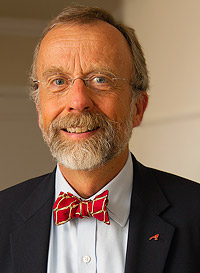
Why We Believe in God(s):
A Concise Guide to
the Science of Faith
with Dr. Andy Thomson
Sunday, February 12, 2012 at 2 pm
IN THIS LECTURE BASED ON HIS NEW BOOK, psychiatrist Andy Thomson examines the evolution, history, anthropology, sociology, and psychology of religious beliefs and provides a brief and accessible guide to the exciting new discoveries that allow us to finally understand why and how the human mind generates, accepts, and spreads religious faith and god beliefs. Dr. Thomson is a staff psychiatrist at the University of Virginia’s Student Health Center and the Institute of Law, Psychiatry and Public Policy, and maintains a private practice of adult and forensic psychiatry in Charlottesville, Virginia. He serves as a trustee of the Richard Dawkins Foundation for Reason and Science.
Tickets are first come, first served at the door. Seating is limited. $8 for Skeptics Society members and the JPL/Caltech community, $10 for nonmembers. Your admission fee is a donation that pays for our lecture expenses.

Sam Harris to Speak about
Free Will for Skeptics at Caltech
2:00 PM SUNDAY MARCH 25
Beckman Auditorium, Caltech
Download Map
Don’t miss Sam Harris’ lecture on the topic of Free Will, based on his new book. Harris presents at 3:45 pm, right after the debate scheduled at 2:00 pm. The price of admission covers both events: $10 Skeptics Society members/ Caltech/JPL community; and $15 for everyone else.
This lecture is
SOLD OUT.
Please call between 12:00 and 5:00 pm Monday through Friday. The Caltech ticket office asks that you do not leave a message.

OUR ANNUAL FUNDRAISING DRIVE IS ON NOW
Help Send Skepticism 101 into the World!
- Click here to read our new plan to take Skepticism to the next level!
- Click here to make a donation now via our online store.
Monthly Recurring Donation Options Now Available
We encourage you to choose the monthly recurring donation option. Simply tell us how long you want your donation to recur (using the drop-down menu on the donation page) and we’ll set up automatic withdrawal for the amount you select.
Just for considering a donation, check out our free PDF download
created by Junior Skeptic Editor Daniel Loxton.


